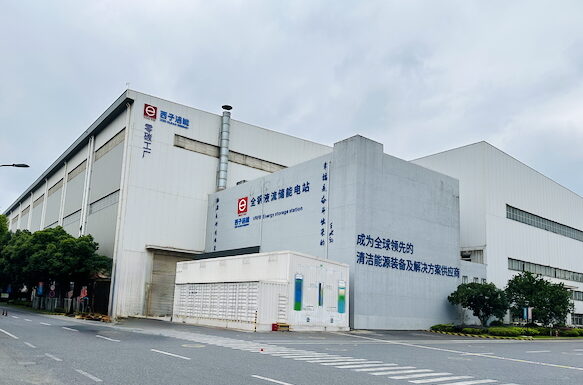Product Outline
VRFB basically consists of cell stack, two independent electrolyte tanks, pumps and pipeline. With the help of the pumps, the electrolyte is circulated between the cell stack and electrolyte tanks. In the electrolyte, vanadium exists four different oxidation states:V2+, V34, V4 + and VSt. A reversible electrochemical reaction of the vanadium ions takes place in both half-cell of the cell stack, allowing electrical energy to be stored or released. The stack determines the power (kW) of the energy storage system, and the electrolyte determines the capacity (kWh) of the energy storage system.
VRFB basically consists of cell stack, two independent electrolyte tanks, pumps and pipeline. With the help of the pumps, the electrolyte is circulated between the cell stack and electrolyte tanks. In the electrolyte, vanadium exists four different oxidation states: V2+, V3+, V4+ and VSt. A reversible electrochemical reaction of the vanadium ions takes place in both half-cell of the cell stack, allowing electrical energy to be stored or released. The stack determines the power (kW) of the energy storage system, and the electrolyte determines the capacity (kWh) of the energy storage system.
- Non-flammable, no-explosion during maximum power operation, deep charging or deep discharging.
- More than 20,000 cycles, more than 25 years operational lifespan.
- No capacity degradation, electrolyte works permanently with no loss.
.
- Suitable for long duration and large capacity energy storage with low Levelised Cost of Storage (LCOS).
- Capacity and power are decoupled, adjustable storage duration from four to ten hours.
- Capacity covers from kWh to TWh with power from kW to TW.





